Ford Capri vs Nissan Leaf – Differences & prices compared
Compare performance, boot space, consumption and price in one view.
Find out now: which car is the better choice for you – Ford Capri or Nissan Leaf?
The Ford Capri (SUV) comes with a Electric engine and Automatic transmission. In comparison, the Nissan Leaf (Hatchback) features a Electric engine with Automatic transmission.
When it comes to boot capacity, the Ford Capri offers 572 L, while the Nissan Leaf provides 394 L – depending on how much space you need. If you’re looking for more power, decide whether the 340 HP of the Ford Capri or the 217 HP of the Nissan Leaf suits your needs better.
In terms of consumption, the values are 13.80 kWh per 100 km for the Ford Capri, and 16.70 kWh for the Nissan Leaf.
Price-wise, the Ford Capri starts at 36300 £, while the Nissan Leaf is available from 30800 £. Compare all the details and find out which model fits your lifestyle best!
Ford Capri
The Ford Capri is a classic car that captivated enthusiasts with its sleek design and sporty appeal. Its long bonnet and distinctive styling made it a standout on the roads, earning it the nickname "The Car You Always Promised Yourself." With a charismatic blend of performance and charm, the Capri remains a beloved icon in the automotive world.
details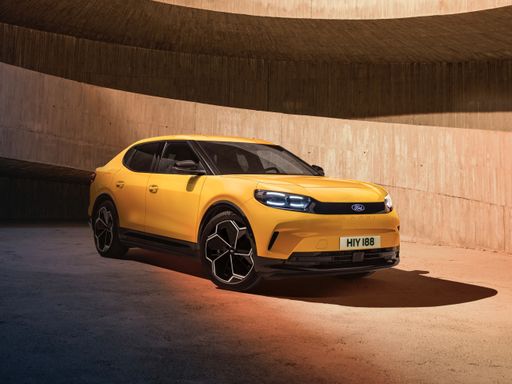 @ media.ford.com
@ media.ford.com
 @ media.ford.com
@ media.ford.com
Nissan Leaf
The Nissan Leaf stands out as a pioneering model in the realm of electric vehicles, known for its impressive blend of practicality and eco-friendliness. It offers a smooth and quiet driving experience, making it an ideal choice for city commuting and longer journeys alike. The interior design is both comfortable and intuitive, providing drivers with a sense of modernity and ease of use.
details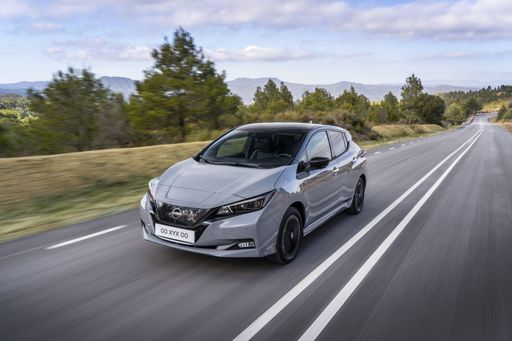 @ germany.nissannews.com
@ germany.nissannews.com
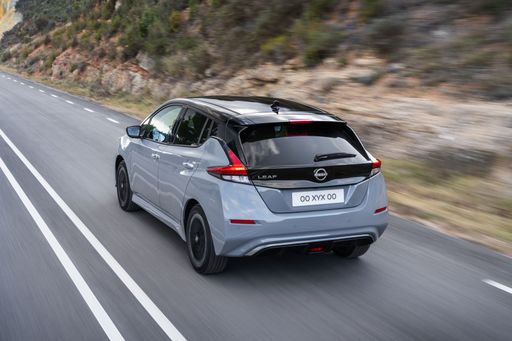 @ germany.nissannews.com
@ germany.nissannews.com
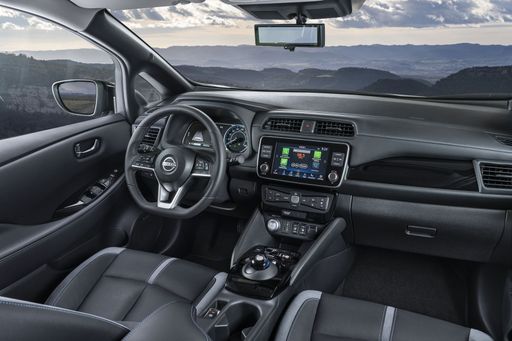 @ germany.nissannews.com
@ germany.nissannews.com
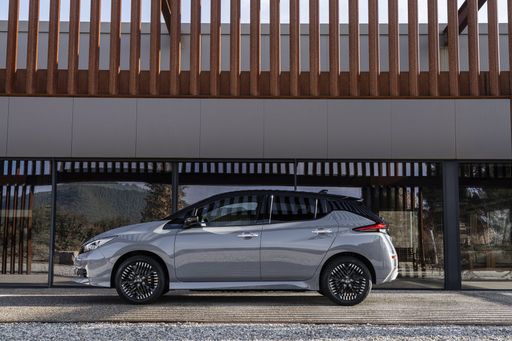 @ germany.nissannews.com
@ germany.nissannews.com

|

|
|
|
|
Costs and Consumption |
|
|---|---|
|
Price
36300 - 50900 £
|
Price
30800 - 37200 £
|
|
Consumption L/100km
-
|
Consumption L/100km
-
|
|
Consumption kWh/100km
13.8 - 16.4 kWh
|
Consumption kWh/100km
16.7 - 17.8 kWh
|
|
Electric Range
374 - 627 km
|
Electric Range
270 - 385 km
|
|
Battery Capacity
52 - 79 kWh
|
Battery Capacity
39 - 59 kWh
|
|
co2
0 g/km
|
co2
0 g/km
|
|
Fuel tank capacity
-
|
Fuel tank capacity
-
|
Dimensions and Body |
|
|---|---|
|
Body Type
SUV
|
Body Type
Hatchback
|
|
Seats
5
|
Seats
5
|
|
Doors
5
|
Doors
5
|
|
Curb weight
1914 - 2174 kg
|
Curb weight
1580 - 1756 kg
|
|
Trunk capacity
567 - 572 L
|
Trunk capacity
385 - 394 L
|
|
Length
4634 mm
|
Length
4490 mm
|
|
Width
1872 mm
|
Width
1788 mm
|
|
Height
1626 mm
|
Height
1540 - 1545 mm
|
|
Payload
570 - 587 kg
|
Payload
384 - 415 kg
|
Engine and Performance |
|
|---|---|
|
Engine Type
Electric
|
Engine Type
Electric
|
|
Transmission
Automatic
|
Transmission
Automatic
|
|
Transmission Detail
-
|
Transmission Detail
Reduction Gearbox
|
|
Drive Type
Rear-Wheel Drive, All-Wheel Drive
|
Drive Type
Front-Wheel Drive
|
|
Power HP
170 - 340 HP
|
Power HP
150 - 217 HP
|
|
Acceleration 0-100km/h
5.3 - 8.7 s
|
Acceleration 0-100km/h
6.9 - 7.9 s
|
|
Max Speed
160 - 180 km/h
|
Max Speed
144 - 157 km/h
|
|
Torque
310 - 679 Nm
|
Torque
320 - 340 Nm
|
|
Number of Cylinders
-
|
Number of Cylinders
-
|
|
Power kW
125 - 250 kW
|
Power kW
110 - 160 kW
|
|
Engine capacity
-
|
Engine capacity
-
|
General |
|
|---|---|
|
Model Year
2024 - 2025
|
Model Year
2019
|
|
CO2 Efficiency Class
A
|
CO2 Efficiency Class
A
|
|
Brand
Ford
|
Brand
Nissan
|
Ford Capri
The Legendary Ford Capri Reimagined: A Modern Marvel
In the world of automotive icons, the Ford Capri holds a special place. Originally launched in the late 1960s, it was once heralded as the car you always promised yourself. Today, Ford has reimagined this classic in a modern electric form, combining nostalgic appeal with cutting-edge technology.
Performance and Powertrain Unleashed
One of the standout features of the new Ford Capri is its electric powertrain. Offering a range of power options, from a capable 170 PS to a formidable 340 PS, the Capri caters to diverse driving preferences. The electric motor ensures a smooth, quiet ride, while different battery configurations provide varying degrees of range and power output. The torque, ranging from 310 to 679 Nm, guarantees swift acceleration and a responsive driving experience.
Revolutionary Battery Technology
The heart of the new Capri lies in its advanced battery technology, with capacities ranging from 52 kWh to 79 kWh. This allows for impressive driving ranges between 560 km and 627 km on a single charge—perfect for both city commuting and longer road trips. The efficient energy consumption of 13.3 to 15.8 kWh/100km is indicative of Ford's commitment to sustainability, achieving a CO2 emission rating of 0 g/km.
Design and Dimensions: A Mix of Past and Future
The Capri's exterior design retains a nod to its classic lineage while embracing modern SUV styling. With dimensions measuring 4634 mm in length, 1872 mm in width, and 1626 mm in height, it offers a spacious interior while maintaining a sleek and dynamic profile. The aerodynamic design not only enhances the aesthetic appeal but also contributes to its efficiency.
Luxurious Interior and Technology
Inside, the Ford Capri continues to impress with a refined and comfortable interior. With seating for five, the car offers ample space and premium materials, making every journey a delight. The cabin is equipped with the latest technology, ensuring connectivity and entertainment on the go. Whether you opt for the Premium or AWD versions, Ford delivers a high standard of comfort and convenience.
Safety and Innovation at Its Core
Safety has always been a priority for Ford, and the Capri is no exception. It comes equipped with a host of advanced safety features and driver assistance systems. Innovations in sensor technology and intelligent braking ensure that drivers and passengers alike are protected under various driving conditions. The Capri's robust structure complements its high safety standards.
Conclusion: A Vision of the Future
The reborn Ford Capri represents a fusion of heritage and future-forward design. Its all-electric powertrain and impressive range of features make it a serious contender in the modern automotive landscape. With sustainability and performance at its core, this classic has been adeptly reimagined for the eco-conscious and tech-savvy driver of today.
Nissan Leaf
Introduction to the Nissan Leaf: A Pioneer in Electric Mobility
The Nissan Leaf has established itself as a trailblazer in the realm of electric vehicles (EVs) since its launch. As we delve into its present-day iterations, the Leaf continues to soar in popularity due to remarkable advancements in technology and sustainability. Let's explore what makes the Nissan Leaf a standout in today's automotive market.
Power and Performance: Under the Hood of the Nissan Leaf
The Nissan Leaf boasts a power output ranging from 150 to 217 PS, depending on the battery option chosen. The vehicle's electric motor, a product of cutting-edge engineering, offers instant torque ranging from 320 to 340 Nm, resulting in impressive acceleration capabilities. The 0 to 100 km/h dash is achieved in as little as 6.9 seconds, showcasing its prowess in electric performance.
Battery Technology: Efficient Energy Management
When discussing the Nissan Leaf, battery technology is at the forefront. The available battery capacities range from 39 to 59 kWh, supporting an electric range between 270 to 385 km. This flexibility allows drivers to choose a model that best fits their driving habits, providing peace of mind for longer journeys without frequent recharging.
Sustainability: The Environmental Edge
One of the primary attractions of the Nissan Leaf is its commitment to sustainability. As an all-electric vehicle, it produces zero CO2 emissions, placing it in the top tier of the CO2-efficiency class with an 'A' rating. This clean energy approach contributes significantly to reducing environmental impact and supports Nissan's drive towards a greener future.
Design and Comfort: Aesthetic Appeal and Practicality
The Nissan Leaf is not just about efficiency; it's also designed for comfort and utility. With its sleek hatchback body and dimensions of 4490 mm in length, 1788 mm in width, and a height of up to 1545 mm, it offers ample interior space. The boot capacity ranges from 385 to 394 litres, providing sufficient storage for everyday needs. The model accommodates five passengers comfortably, ensuring a pleasant ride for everyone.
Innovations and Safety: Advanced Features for Peace of Mind
Nissan equips the Leaf with an array of intelligent features that enhance safety and convenience. The available equipment lines, including N-CONNECTA, Tekna, e+ N-CONNECTA, and e+ Tekna, offer varying levels of technology integration. ProPILOT Assist, e-Pedal, and a comprehensive suite of driver-assistance technology are just a few examples that highlight Nissan's commitment to innovation in the EV market.
Conclusion: The Nissan Leaf Continues to Lead
With prices ranging from €35,900 to €43,400, the Nissan Leaf remains an attractive choice for those looking to embrace electric mobility. It perfectly balances performance, design, and sustainability, making it a compelling choice in the competitive EV landscape. The Nissan Leaf not only represents the future of driving but also reinforces why it continues to be a leader in the electric vehicle community.
Which drive types are available for the Ford Capri?
Available as Rear-Wheel Drive or All-Wheel Drive.
The prices and data displayed are estimates based on German list prices and may vary by country. This information is not legally binding.
